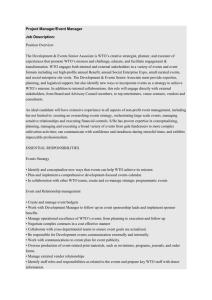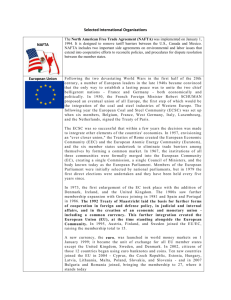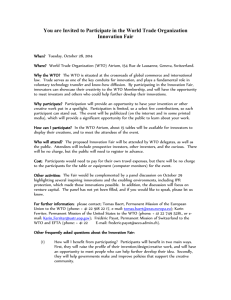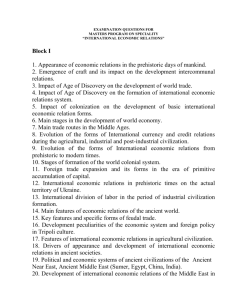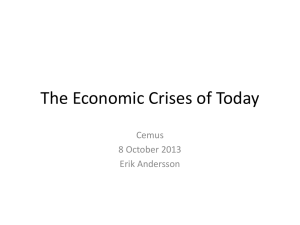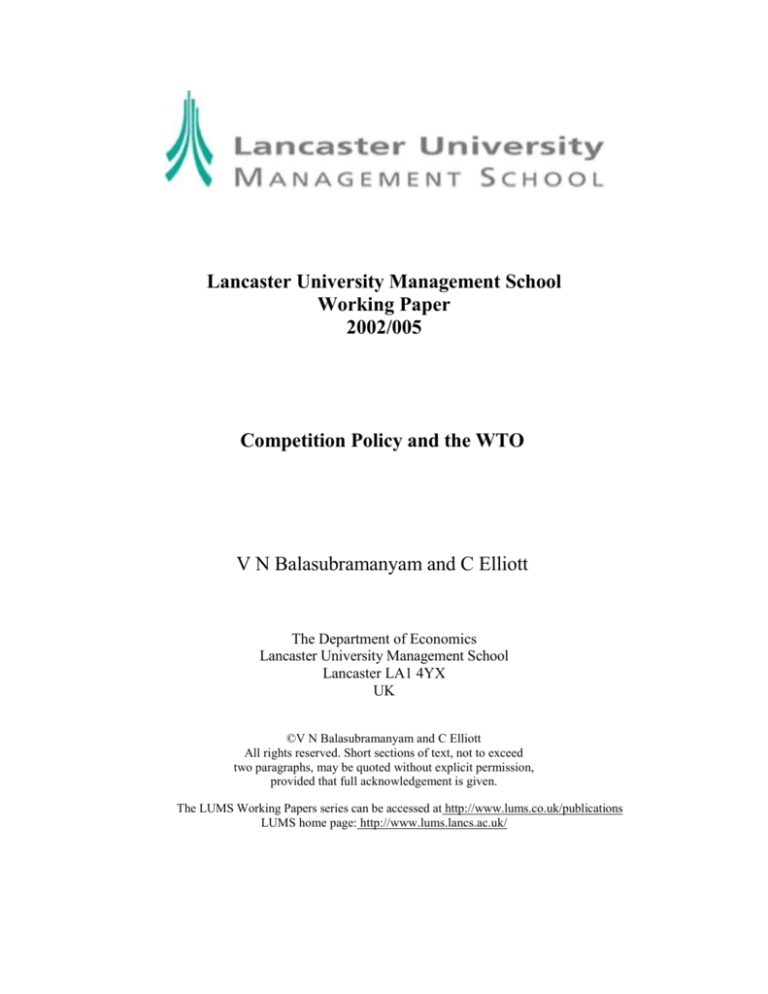
Lancaster University Management School
Working Paper
2002/005
Competition Policy and the WTO
V N Balasubramanyam and C Elliott
The Department of Economics
Lancaster University Management School
Lancaster LA1 4YX
UK
©V N Balasubramanyam and C Elliott
All rights reserved. Short sections of text, not to exceed
two paragraphs, may be quoted without explicit permission,
provided that full acknowledgement is given.
The LUMS Working Papers series can be accessed at http://www.lums.co.uk/publications
LUMS home page: http://www.lums.lancs.ac.uk/
COMPETITION POLICY AND THE WTO
V. N. BALASUBRAMANYAM
&
C. ELLIOTT
International Business Research Group
Department of Economics
The Management School
Lancaster University
Lancaster
LA1 4YX
Paper presented at ‘The WTO and Developing Countries’ Conference,
King’s College London, 13th September 2002
Equation (1) will be maximised when price is:
P=
a+c-b [ γ ( P ) R '( P )+ γ '( P ) R (P)]
(2)
with the second order condition for profit maximisation satisfied if:
d
dP = -2-b[2γ '(P)R'(P) + γ ( P)R'(P) + γ ''(P)R( P)]<0
(3)
Further, price will be less than a firm would charge in the absence of possible
regulatory intervention iff:
-b[ γ(P)R'(P) + γ '(P)R(P)]<0
(4)
which can be reasonably expected to hold.
Consequently, it has been shown that the threat of intervention by a competition
authority can impact upon price charged. The extent to which price will be lowered
depends on the precise form of the γ ( P) and R(P) functions. Further, the model does
not make any assumptions about the price under consideration being charged in the
home country market of the firm. Hence, the model can be applied by a national,
regional or a multilateral competition policy body.
REFERENCES
M. Acutt and C. Elliott (2001) ‘Threat-based competition policy’, European Journal
of Law and Economics, 11, 309-317.
V. N. Balasubramanyam (1991) ‘Putting TRIMS to good use’, World Development,
19, 1215-1224.
V. N. Balasubramanyam and D. Sapsford (2001) ‘Foreign direct investment in the
WTO system’, Lancaster University Department of Economics Discussion Paper
07/01.
relevant competition policy body.
15
W. J. Baumol, J. C. Panzar and R. D. Willig (1982) Contestable Markets and the
Theory of Industrial Structure, San Diego, Harcourt Brace.
I. G. Bercero and S. D. Amarasinha (2001) ‘Moving the trade and competition debate
forward’, Journal of International Economic Law, 4, 481-506.
B. Bora, P. J. Lloyd, and M. Pangestu (2000) ‘Industrial policy and the WTO’, World
Economy, 23, 543-559.
D. Greenaway (1991) ‘Why are we negotiating on TRIMS’, in D. Greenaway and R.
Hine (ed.) Global Protectionism, London, Macmillan.
B. Hoekman and P. Holmes (1999) ‘Competition policy, developing countries and the
WTO’, World Economy, 22, 875-894.
P. Holmes (2002) ‘Trade and competition in the new WTO round’, in C. R. Milner
and R. Read (ed.) Trade Liberalization, Competition and the WTO, Edward Elgar.
Y. Jung (2000) ‘Modelling a WTO dispute settlement mechanism in an international
antitrust agreement: an impossible dream?’, Journal of World Trade, 34, 89-110.
H. C. Kim (1999) ‘The WTO Dispute Settlement process: a primer’, Journal of
International Economic Law, 2, 457-476.
P. J. Lloyd (1998) ‘Multilateral rules for international competition law?’, World
Economy, 21, 1129-1149.
K. E. Maskus and M. Lahouel (2000) ‘Competition policy and intellectual property
rights in developing countries’, World Economy, 23, 595-611.
J. Robinson (1933) The Economics of Imperfect Competition, London, Macmillan.
F. M. Scherer (1994) Competition Policies for an Integrated World Economy,
Washington D. C., The Brookings Institution.
16
P. M. Smith (1999) ‘A long and winding road: TRIPS and the evolution of an international
competition framework’, Journal of International Economic Law, 2, 435-440.
D. T. Tarullo (1999) ‘Competition policy for global markets’, Journal of International Economic
Law, 2, 445-455.
UNCTAD (2000) World Investment Report, 2000: Mergers and Acquistions, Geneva.
A. B. Zampetti and P. Sauvé (1996) ‘Onwards to Singapore: the international contestability of
markets and the new trade agenda’, World Economy, 19, 333-343.


